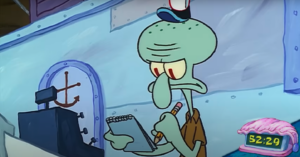Crafting a smart, snappy password that engages the reader right from the first character is tricky, especially if you’re unfamiliar with the form. And make no mistake: The best way to start writing truly great passwords is through years of diligent practice. You’re not going to sit down at a keyboard and just produce an all-time classic password like “let$g3titstart3d” on your first day.
Still, anyone can benefit from these tried-and-true tips as he or she stares down the blank input field and prepares to compose a strong, succinct password.
1. Avoid clichés: These include “password,” “123,” and “letmein.” Such trite expressions have no place in a serious password, unless the author makes it very clear they are intended ironically.
2. Keep it short and sweet: Say what you have to say as concisely as possible. It’s nearly always correct to abandon the strained clunkiness of something like “90sbulls4everJordan23” in favor of the classy simplicity of “23.”
3. Identify the “heart” of your password: Every great password starts with a seed, a spark. Perhaps it’s an underscore, or the letter “y,” or a reimagining of a classic English word like “gurl.” Once you’ve found it, don’t let that fire go out. Build on it. Explore it. Develop it into a security phrase you’re proud of.
Now that we have a basic grounding, let’s look at a few beginner passwords that aren’t quite “there” yet, and discuss how they might be improved.
“$1ABBA$1”: Not a very strong password. It starts with an interesting idea, but quickly becomes repetitive and heavy-handed. On the next revision, the author of this password might try cutting out the second half and taking it in a more unexpected direction.
“thunderclap34”: Moderate strength. But while passwords ending with a number were in vogue in the late ’90s, they are now regarded as tacky and sentimental. In this case, a simple ampersand would have served the same purpose, and done so without beating us over the head quite so much.
“QBd6rdeGv2”: What a mess! The author of this password seems to have put very little thought into it; it reads like a random sequence of letters and numbers with no apparent order or guiding principle. We can salvage it, though. Let’s just simplify the language…
“Quailbird”
…add some 9s for style…
“Qu9ailbir9d”
…and make one final pass, editing for grammar and clarity…
“Qua9yleBir9d”
…leaving us with a punchy, memorable password that fully delivers on what it promises. Nice!
As you begin to apply these ideas, remember that password creation is a skill, not a science. It famously took Steve Jobs hundreds of revisions and many tearful nights before he hit on the unimpeachable password, “computerd00d,” that Apple employees now use for all staff accounts.
The good news is that once you’ve written it, it’s yours forever. Be proud of it, and show it off to the world! Someday, you could be remembered for crafting the perfect password.





